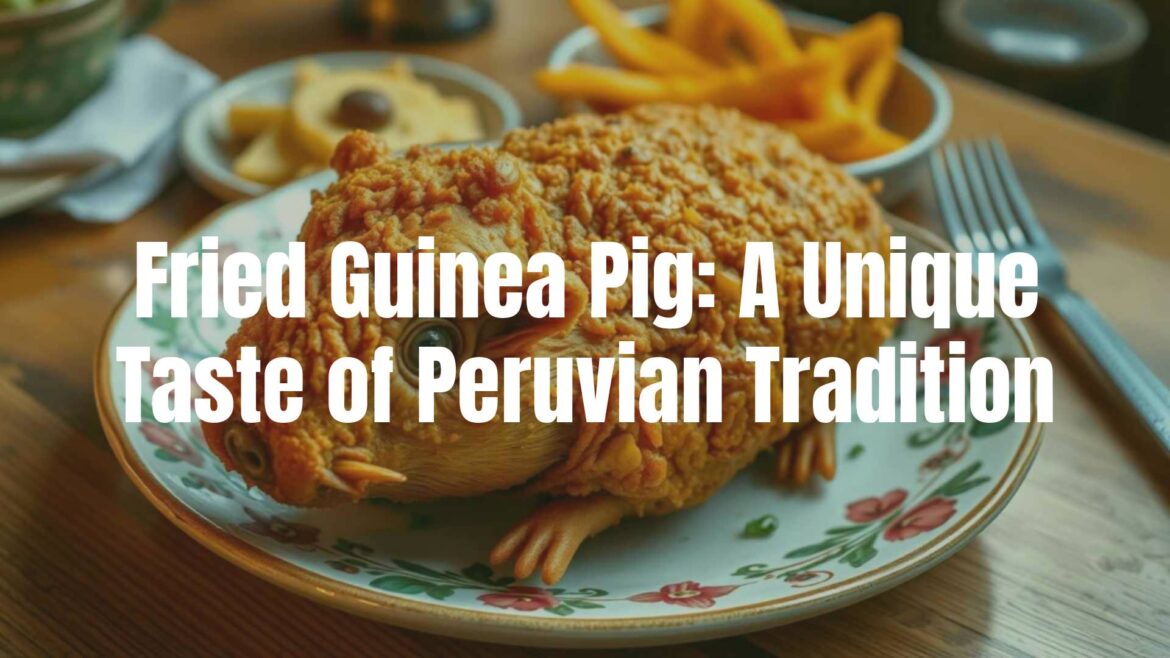Fried Guinea Pig: A Culinary Treasure of Peru
A Distinctive Peruvian Delicacy
Fried guinea pig, or cuy chactado as it is known in Peru, stands out as one of the country’s most memorable and culturally significant dishes. Renowned for its crispy texture and robust flavor, this preparation of guinea pig has roots that reach deep into Andean history. It is both a culinary adventure for visitors and a cherished staple for many Peruvians, particularly in the highland regions.
Historical Roots and Evolution
The consumption of cuy predates the Incan Empire, with archaeological evidence showing guinea pigs were domesticated by indigenous Andean cultures over 4,000 years ago. Used in both rituals and as a food source, guinea pig was considered a sacred animal and a luxury reserved for special occasions. The development of frying techniques was influenced by the introduction of Spanish cooking methods, leading to the beloved modern rendition: cuy chactado, where the animal is flattened and fried until golden and crispy.
Preparation and Presentation
What distinguishes fried guinea pig is its simple yet effective preparation. The whole animal is usually marinated with garlic, salt, and sometimes indigenous spices or Andean herbs, then lightly dusted with flour or cornmeal before being fried in hot oil. The process results in a crisp exterior while the meat inside remains tender. Guinea pig is typically served whole, often laid flat, with the head and limbs intact—a presentation that both highlights its rustic roots and preserves its traditional authenticity.
Flavor, Texture, and Visual Allure
Fried guinea pig boasts a flavor profile that is rich, gamey, and slightly earthy, often compared to a cross between rabbit and dark meat poultry. The skin turns exceptionally crunchy from frying, making it a central feature of the dish. Its striking golden color and unique presentation are visually arresting, making cuy a centerpiece at many festive tables. The contrast of the crispy skin with the juicy, lightly flavored meat offers a singularly satisfying culinary experience.
Key Ingredients and Peruvian Touches
Beyond the guinea pig itself, the most vital components include native Peruvian seasonings such as aji panca (a mild red chili) or huacatay (black mint), which impart a distinct regional character. The use of local oils and the preference for specific native guinea pig breeds further contribute to authenticity and depth of flavor.
Cultural Significance and Regional Presence
Today, fried guinea pig is celebrated across Peru but is especially prominent in the southern highland regions such as Arequipa, Cusco, and Puno. It is a fixture at festivals, family celebrations, and even rituals honoring ancestors. Sharing a plate of fried cuy is considered a gesture of respect and hospitality, reflecting communal ties and Peruvian heritage.
Traditional Serving Style
Cuy chactado is often accompanied by boiled potatoes, corn on the cob (choclo), and spicy aji sauces. Sometimes, salad or ocopa (potato with aromatic green sauce) may appear alongside. The experience of eating fried guinea pig is as much about the surrounding ceremony and conviviality as it is about the dish itself.
This cherished delicacy endures as an emblem of Peruvian culture—a dish whose story is told through every crispy, flavorful bite.


